Last week I outlined my frustrations with a portion of the layout.
The main sticking point being that this section (photo below) didn’t relate visually to other areas. The primary reason was that I felt these tracks were too neat and clean. As you can see from the photo, the area is far from complete, which might also have contributed to my sense of frustration.
I started making some changes over the weekend. The first thing to go was the derelict section of track coming off the old main next to what I now refer to as the “New Switch” that completes the runaround track.
In the real world this would have been a safety hazard for crews and the railroad would have removed it completely when the track was reconfigured in this area. I removed the rails and scrapped off the ties down to the subroadbed and cut back the old turnout ties. I stained the raw ends of the newly cut ties and added much more cinder ballast to the remnant of the old “Cincinnati Main,” which is now nothing more than a truncated switch lead instead of a through track. The cinder ballast helps blend the track into the surrounding scenery and creates a better visual relationship to existing track on the rest of the layout. These changes only took a half an hour or so.
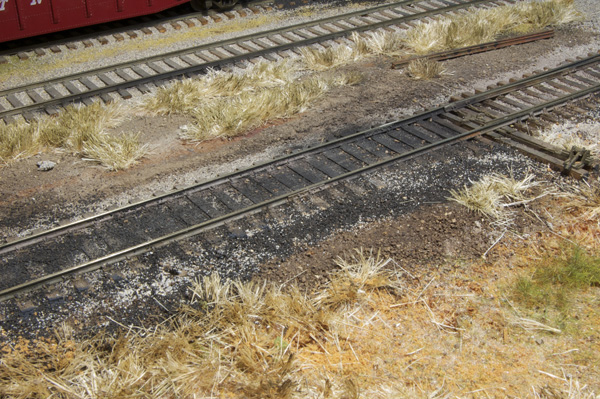
The old switch ties have been cut back to normal length and the raw ends stained. Cinder ballast was added to cover the limestone I used initially, which was too clean in appearance for my tastes.
Cleaning up the resulting scar involved adding more dirt and other ground cover, blending it in with the rest of the scenery. There’s still a bit more work to do, but it’s already hard to tell there was once a section of track here.
Weeding the yard
The tracks of the CSX interchange represented another visual sore spot. To begin the weathering process, I applied (dumped would be more accurate) cinder ballast and actual dirt, burying the ties on both tracks. The materials were bonded in place via the usual techniques. Next came the sisal twine weeds in generous quantities. A mistake I see often is that modelers don’t add enough vegetation. Weeds and groundcover are pervasive, growing wherever they get a foothold. I spent several hours applying weeds around both tracks. The rear track (I’m still contemplating names for it) will get the bulk of the new plantings, since it has been decommissioned and is now used for storage.
I let the glue dry overnight and then did tests with a car and the loco to make certain I could still run on this track if needed. I had to do some slight trimming of weeds that interfered with smooth running and also clean the rails. I don’t plan to use the track regularly, but I may shove something back there on occasion. Closer to the end, I plan to semi-permanently park two heavily weathered steam-era cars that are used for storage. I also plan to have several saplings growing up around them to disguise the end of track as suggested by my friend Trevor Marshall.
For the front track, or CSX track as I now refer to it, the weed growth won’t be quite as thick, since it is still an active running track. However, it will be in less than ideal condition. The image of a car standing in the tall grass and weeds is terrific and conveys tons of information, as does watching a loco slowly pick its way through this area.
I still need to rethink the land contours between the rear track and the backdrop along with completing the cosmetic revisions on the CSX track. There are always more scenery refinements to consider such as toning down the brightness of track ballast with washes and weathering powders, adding a greater variety of weeds and so on. In all however, this section now relates much better and the layout as a whole is taking on a more consistent appearance. With the two rear tracks blended into the scenery, that impression of overcrowding and track being everywhere doesn’t scream at you so loudly now.
Looking at the scene from the aisle is very satisfying. I have lot’s more “weeding” to do, so I better get on it.
Regards,
Mike
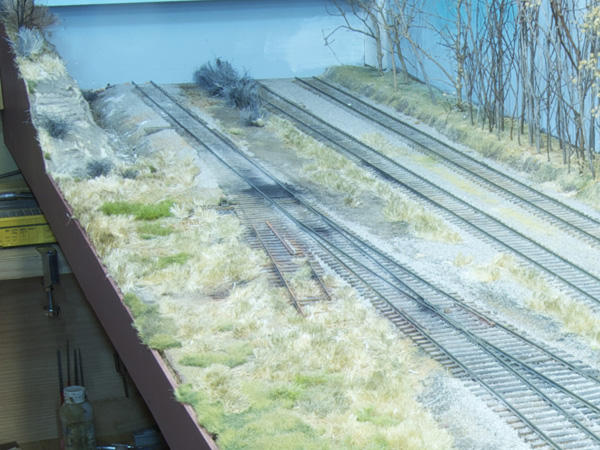
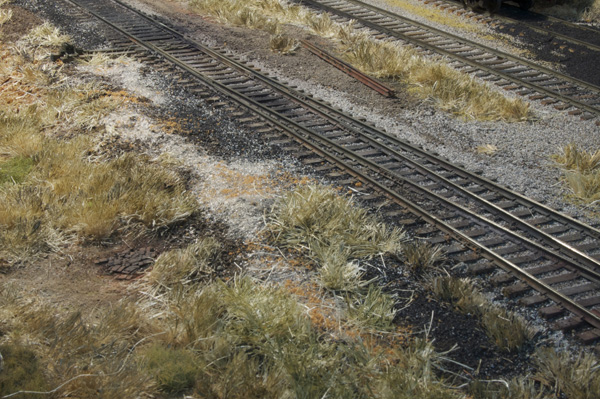
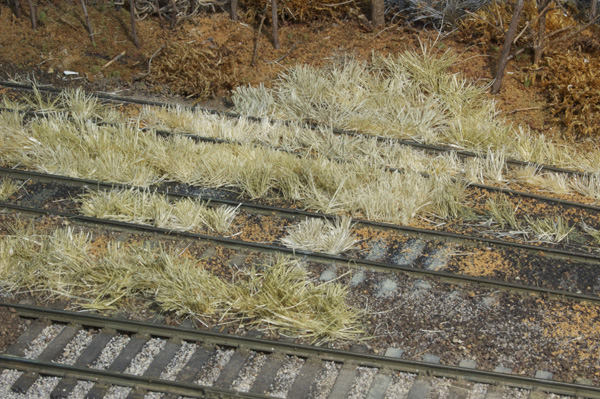
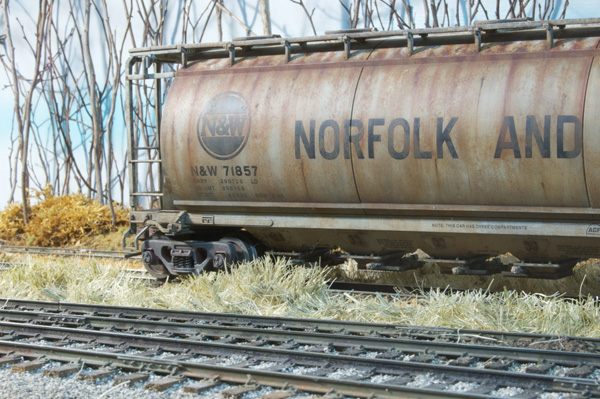
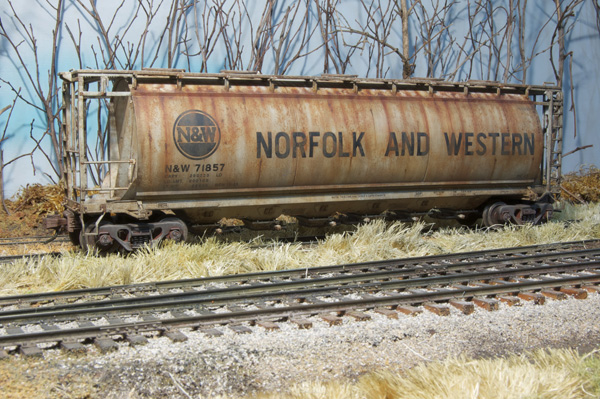
That looks fantastic, Mike – well done! The extra vegetation looks great and provides another reason to operate SLOWLY on those spurs – if they are that overgrown then maintenance has also been minimal, so crews would take care to not put any cars on the ground.
I’m looking forward to future reports on this…
Cheers!
Thank you Trevor.
Weeding is something that easy to do and tailor to the time available.
I’m looking for suitable pieces of equipment to park at the end of the track for storage cars. I have photos of an old refrigerator car and a flat at West Harrison, which might be candidates. An old beat up gondola or boxcar would also work well. Stay tuned.
Regards,
Mike
Mike,
Like the changes that you have made. Excellent example of how just a few fixes can take a well maintained ROW to a secondary main!
Looking forward to seeing your progress.
Matt
Hi Matt,
It really doesn’t take that much to fix certain problem areas. Bringing older work up to current standards is also a way to stay active and keep the layout looking fresh. Thanks for the comment.
Mike